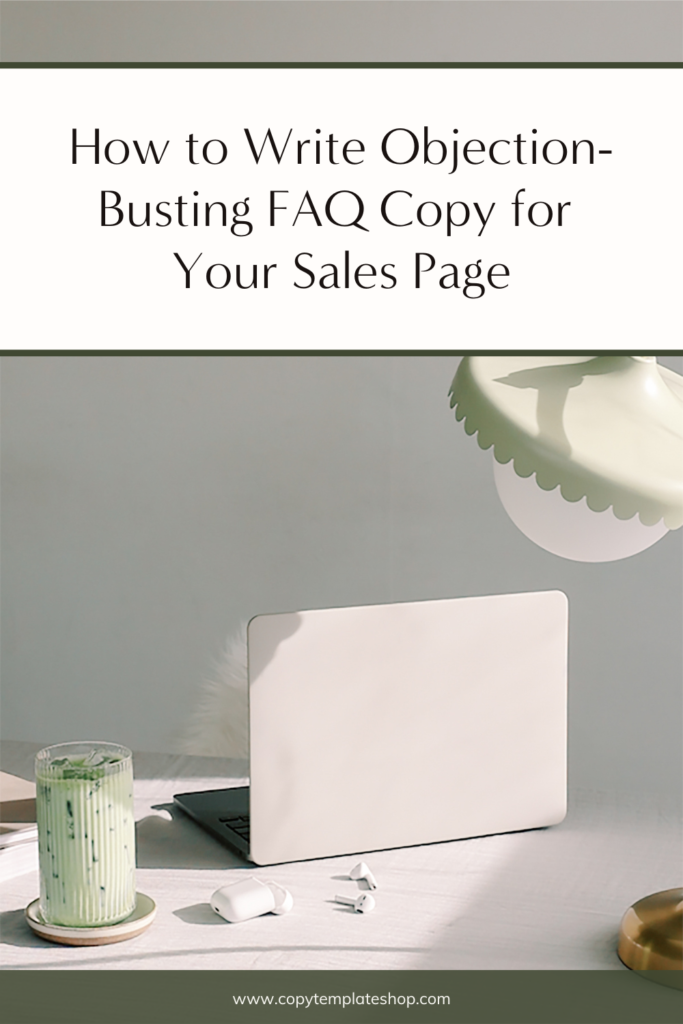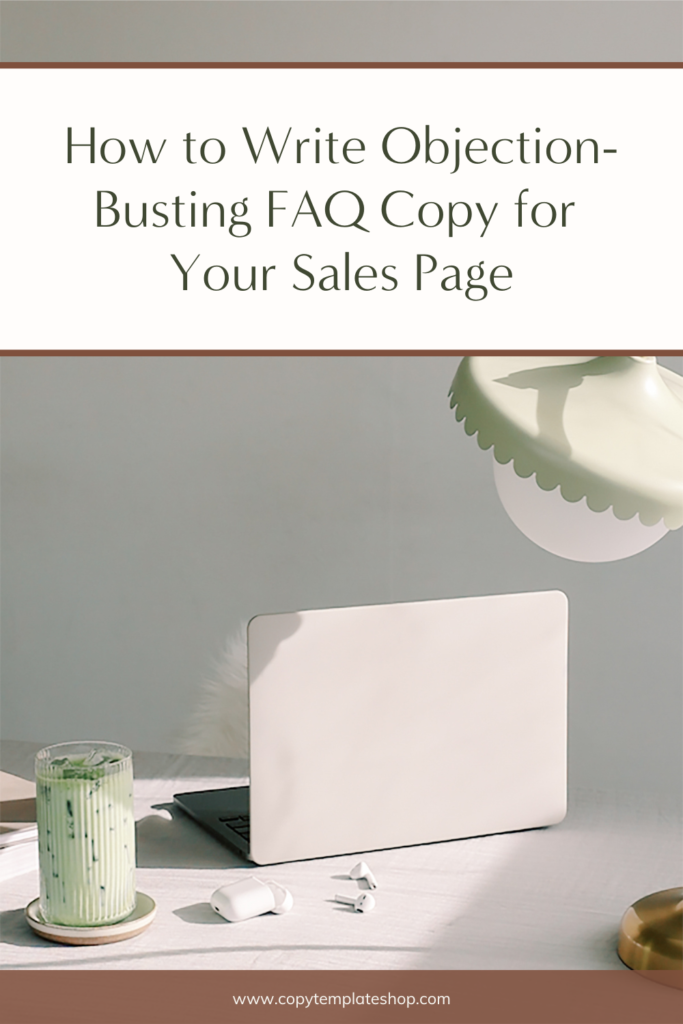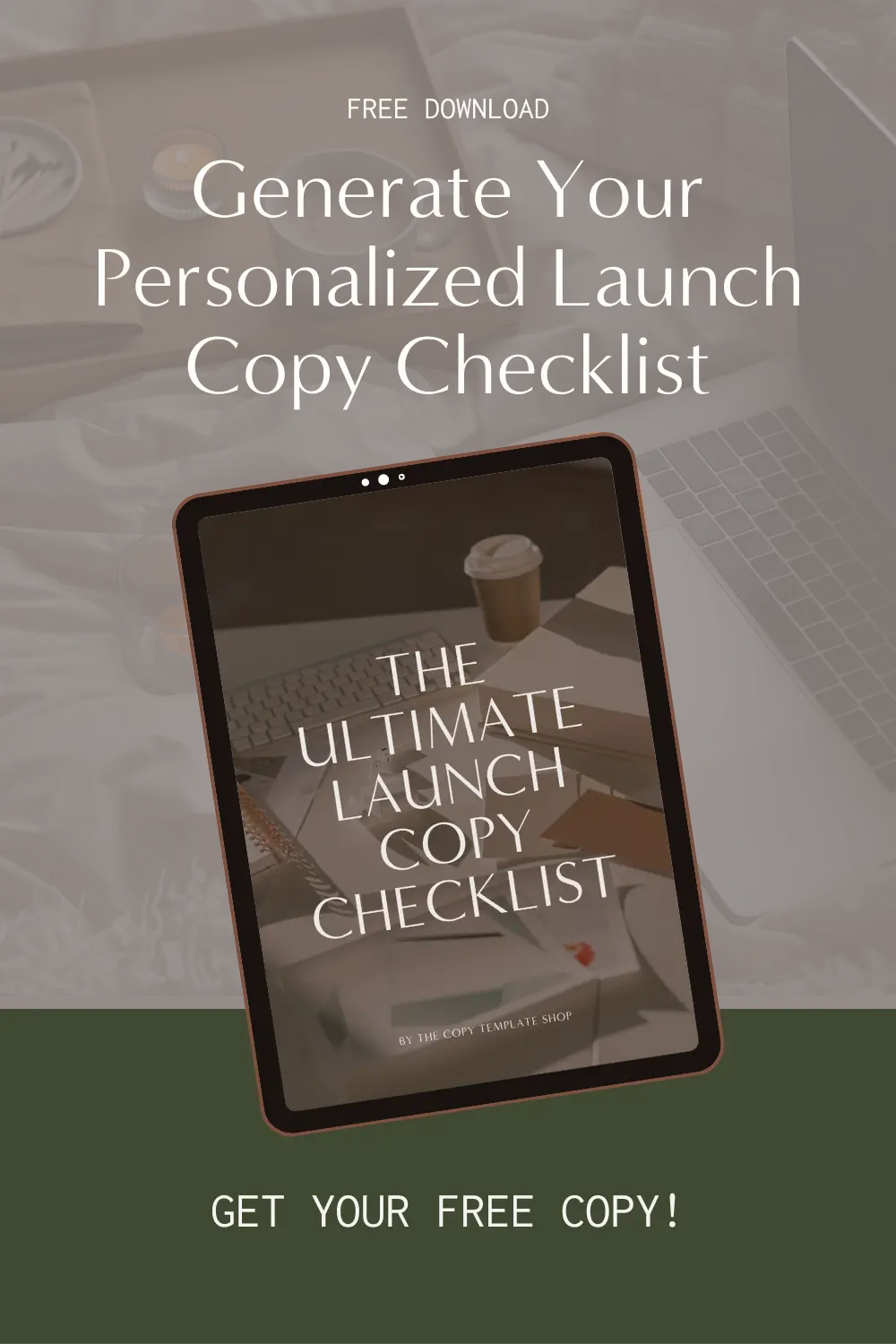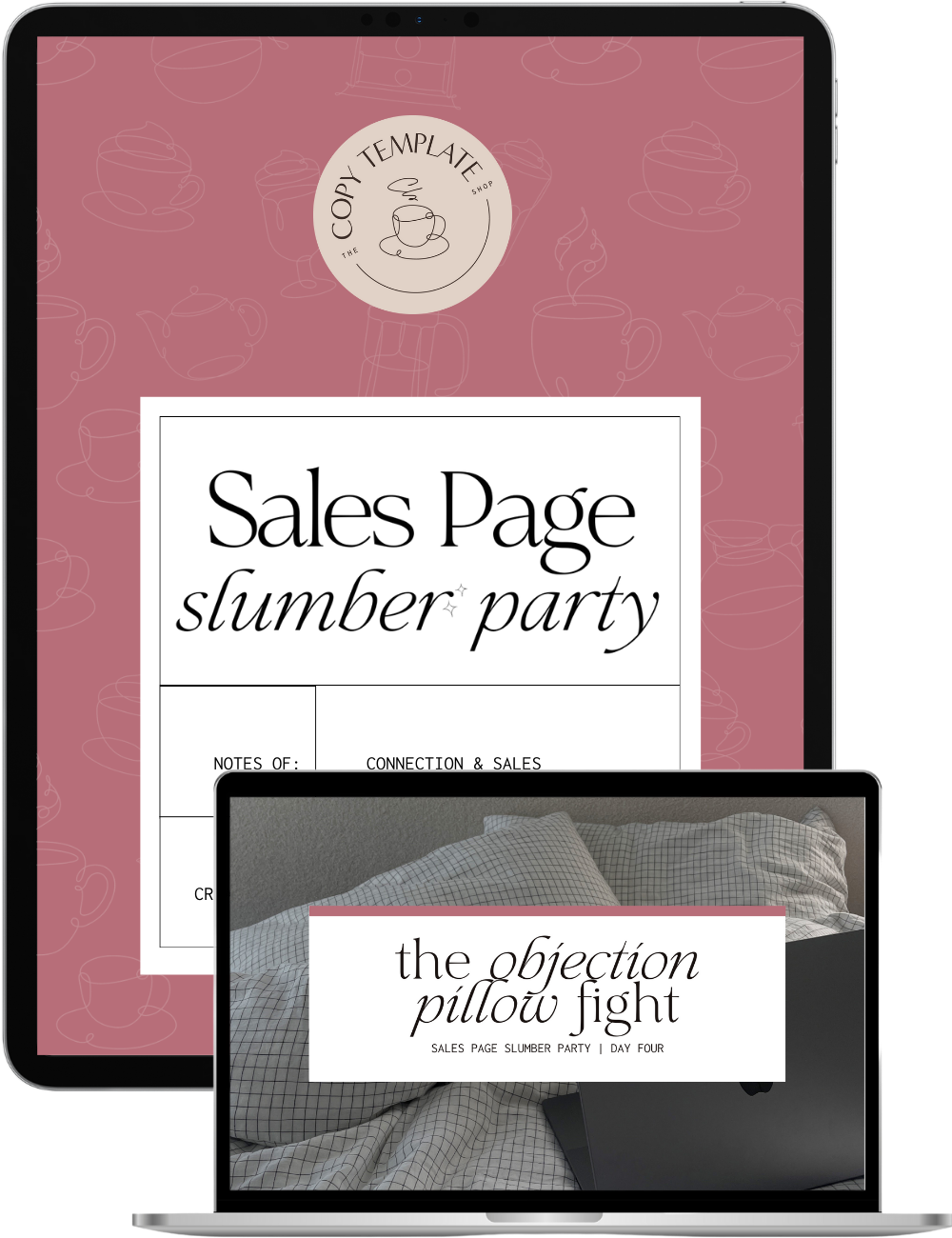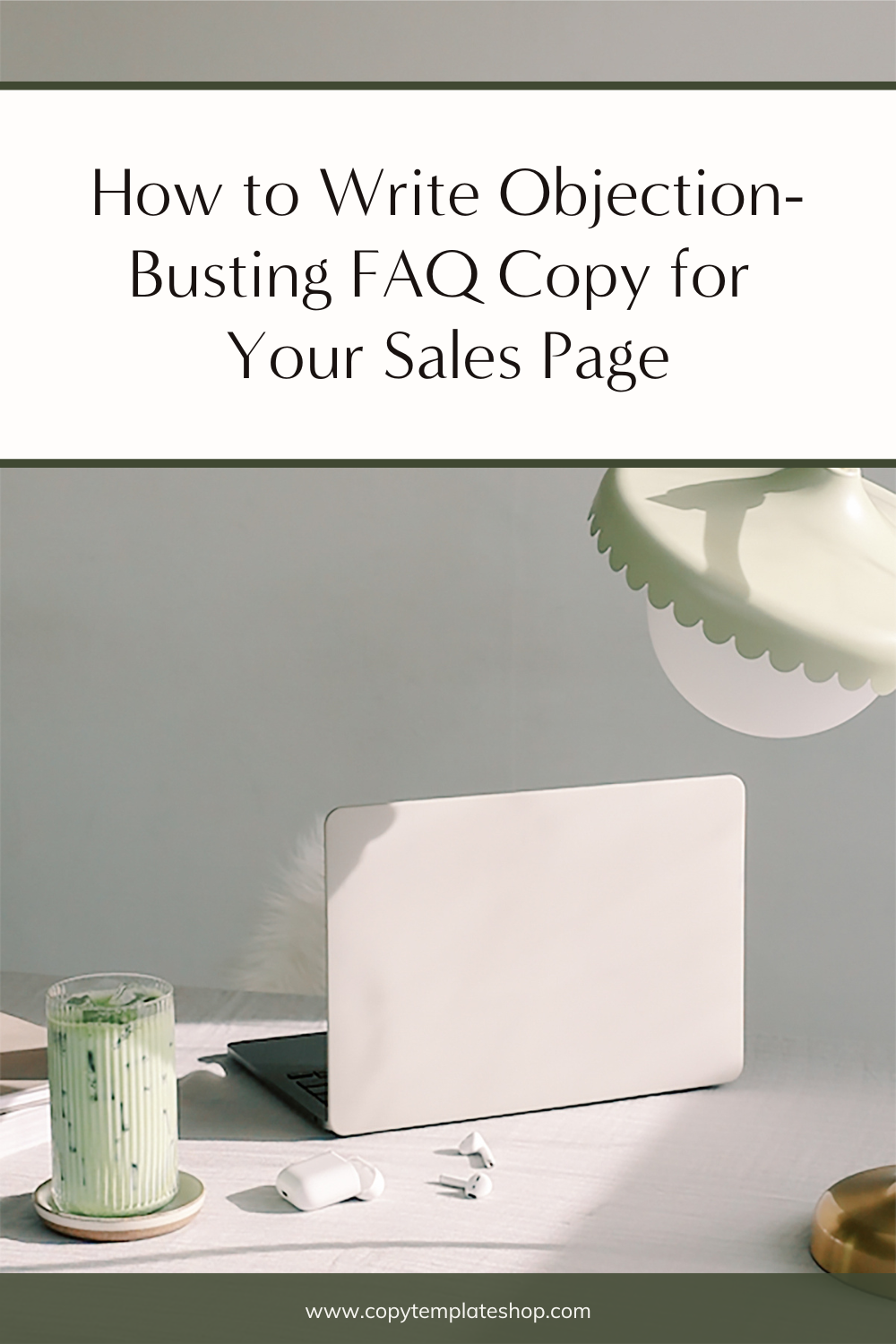One of the most common mistakes that I see people make with their sales page copy is neglecting the FAQ section. While most business owners treat it as a “catch all” space to re-establish some of the most important details of their offer, it’s actually a really effective space on your sales page for overcoming buyer objections.
The FAQ section, if done right, can be one of the most powerful sections of your sales page! It can help you address any hesitations that your potential buyer might have from reading your sales copy and will help them make an informed decision that’s best for them.
(Not sure if your offer needs a sales page at all? Here’s why it probably does.)
Let’s talk about about the importance of the FAQ section on your sales page and the best ways you can utilize it to help alleviate objections your audience may have surrounding your offer.
1. Why Your Sales Page Needs an Objection-Busting FAQ Section
One of the most important parts of a sales page is the FAQ section. Something I see many people do is write a very generic or boring FAQ section that doesn’t do much for their sales copy. If you neglect this section, you’re doing a disservice to yourself and your reader.
One of the best ways to write your FAQ section is to use it as a way to overcome your buyer’s objections. That doesn’t mean you should try to manipulate or convince someone to change their mind if it’s already made up. Rather we want to really speak to those who are on the fence about your offer.
We want to write our FAQ section in a way that will help nudge the potential buyer in the direction that feels right for them. You can do this by making it obvious if the offer is a good fit for them or not.
2. Identify Common Buyer Objections for Your Offer
We’ve established that the FAQ section is a prime spot to sell to your audience; but to do so effectively, we have to know the main objections any reader has before investing in an offer.
The objections surrounding your offer are going to be unique and specific to the type of offer you’re selling. For instance, if you’re selling a low-ticket offer, the audience may want to know why it’s priced so low. On the flip side of that, if you’re selling a membership offer that has a higher price point, your reader may have questions about the amount of time they need to commit to get the most out of being a member.
Generally speaking, though, there are three main objections that we should always take into consideration when selling any kind of offer:
TIME
Your reader may be unsure of investing in your offer because they don’t know how much time they’ll have to commit to see results. To address this concern, you could highlight in the FAQ section how easy the material is to get through, or that you offer different materials that allow them to learn on the go.
They also may want to know how quickly they can expect to see results. How long would it take for someone to experience the transformation you’re promising, or even the first hint of results?
Finally, the reader could also be hesitating on the timing of the offer. In other words, they may not think it’s the right time to invest in what you’re offering. Why is now the right time to join?
MONEY
This is one of the more difficult objections to overcome because, in my opinion, I don’t think you should ever try to sell to a person who is telling you that they can’t afford your offer. Each of our financial situations is different, and it’s unethical, unfair, and non-inclusive to imply that a mindset shift is all that’s needed to afford your offer.
In my experience, the best way to address money hesitations is to:
- Be very clear on all of the costs associated with your offer (not just the investment, but also any costs that might be associated with implementing what you’re teaching)
- Sate if you have a refund policy, and what the terms are
- Let the audience know about any payment plans that are offered
You can (and should!) address each of these hesitations throughout your sales page, but it’s generally good practice to re-address them in your FAQ section
FIT
Having all the positive testimonials in the world won’t necessarily give your reader proof that your offer will work for them. As consumers, we often tell ourselves stories that make us believe we’re not capable of achieving the same results as someone else, or that an offer won’t work for us in the same way that it did for others.
While it’s true that we all bring different lived experiences to our work, we owe it to our readers to give them all the information they need to decide whether or not this offer is the perfect fit for them — and that sometimes means challenging those beliefs.
This is why it’s SO important to get crystal clear on the messaging of your offer:
- Think about who you’re trying to help
- Consider what they might have tried before that hasn’t worked for them
- Address how your offer is different
- Clearly explain what makes someone a good fit for your offer
If you can show your reader that your approach is different, then you’re more likely to show them that you can help them achieve the results they’re looking for — and make them feel like your offer is a good fit.
3. Answering FAQs in a Way That Builds Trust and Credibility
No matter what objections or hesitations you’re addressing in your FAQ section, my biggest pointer to you is to make sure that you’re answering those questions honestly and transparently.
Selling in your FAQ section is most effective when you can have an open conversation about whether or not the offer is a good fit for someone. It should be your goal to give your audience all the information they need to make an informed decision. This means going beyond surface-level questions to dig deep into what your reader needs to take action. That’ll create much better and more effective use of the FAQ section of your sales page.
4. Structure Your FAQs for Clarity and Impact
When you structure your FAQ's it's important to keep your answers as concise as you can. When your answer is clear and concise there is more clarity and impact.
If you have lots of FAQ's, I recommend using accordion-style formatting where the reader has to actually click on the question in order to see the answer. This keeps the section neat and tidy. Another tip to consider is grouping similar FAQs together — e.g. money-related questions, then fit-related questions, then your standard basic FAQs.
5. Update Your FAQ Section Regularly
Whenever you do a launch of your offer, pay attention to any questions that you get frequently. If you consistently get similar questions put them toward the top of the FAQ section or add them in if they keep coming up in your inbox.
This is the one section that I really recommend coming back and refreshing on a regular basis, especially as your business (and possibly your policies) evolve and grow.
Sales Page Slumber Party
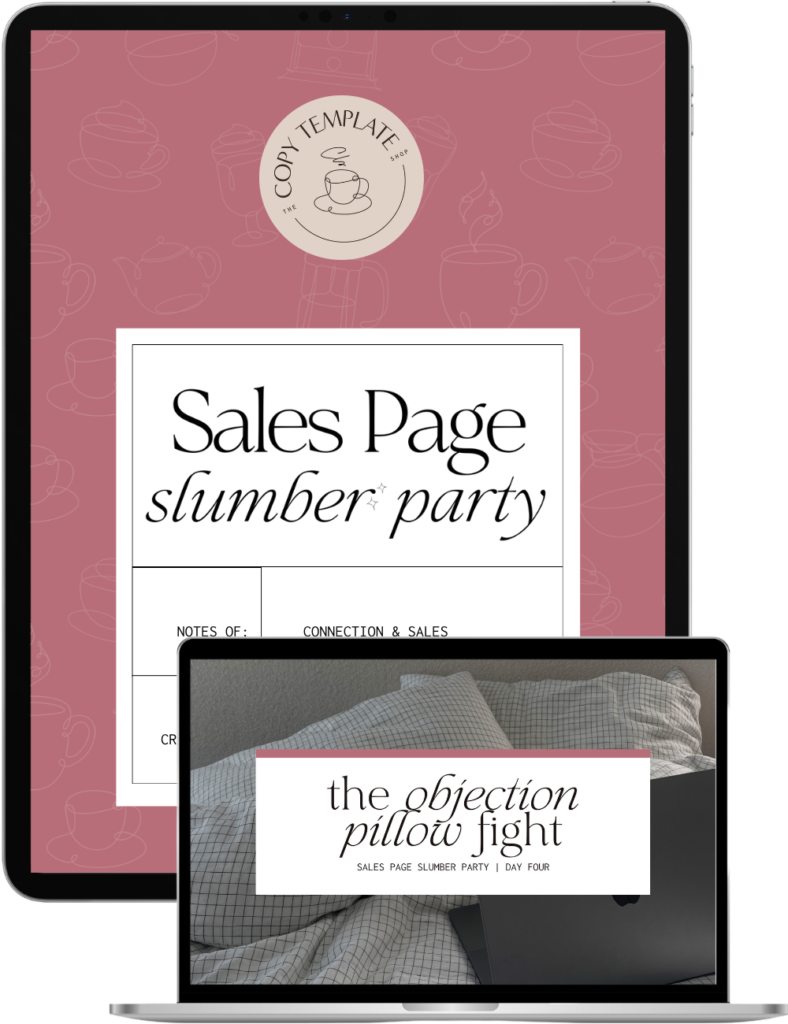
Sales Page Slumber Party is a 5 day on-demand bootcamp where you’ll write clear, persuasive sales page copy that connects with your ideal buyers, conveys the incredible value of your offers, and brings in sales while you dream up your next big move.
Looking for more copy tips?
If you’re wanting to improve your copy to book more clients, check out more tips below!
6 Effective Sales Page Templates: Why Generic Doesn’t Cut It >
Sales Page Structure Secrets: A Guide for More Conversions >
What is a sales page (and how to write a good one) >
Pin for later
